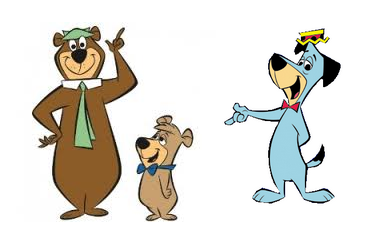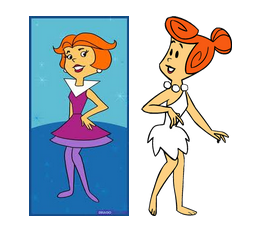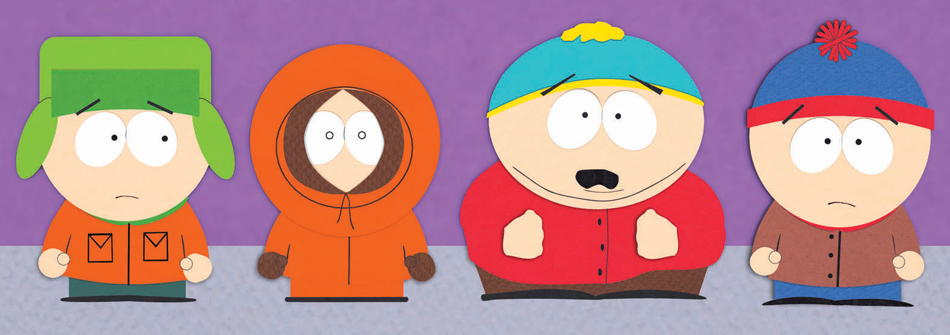No Necks Allowed
Fred Flintstone and George Jetson are iconic comic characters from the Hanna-Barbera universe. While Fred is a prehistoric guy with a pet dinosaur and George lives in the year 2062 (and has a flying car!), they’re nonetheless similar in other ways. Both are only moderately competent at their jobs, are typically well-meaning, and find themselves in hysterical situations stemming from their own mistakes.
And, by design, neither has a visible neck.
But in this case, they’re not alone. The same is true for most Hanna-Barbera characters at the time. Take, for example, Yogi Bear (and Boo Boo) and Huckleberry Hound:
It’s borderline absurd. Perhaps it’s a coincidence with Flintstone and Jetson, but the anthropomorphized bears and dog? Oh, and they’re wearing ties for some strange reason — and they’re not even wearing shirts!
What’s going on here?
It’s an animation trick — one designed to save animators a lot of time and a lot of money, too.
Think about how your torso, arms, legs, etc. change when your expression changes. When your face is smiling, the rest of your body reacts in kind, and while not the thrust of your physical expression, it is still definitely noticeable. For animators, this causes a problem, because every time a character’s demeanor, mood, or action changes, the whole body has to be redrawn. When producing dozens of television episodes, such an investment is simply a non-starter.
However, if the animator can somehow trick the viewer’s eyes into separating the faces from the rest of the characters’ bodies, they can save themselves a ton of work simply by replacing their necks with a collar. By breaking the image up into two parts — the head, one, and the body, two — animators could concentrate on animating the characters’ faces, which makes sense because the face is the characters’ most expressive area. There was no need to re-draw the body each time. Instead, animators would take a pre-drawn body pose from a repository of a dozen or so, and match it as best as possible to get the desired expression.
The “no necks” rule, while a shortcut, was by no means absolute, however. When a character required some neck to be shown, the animators obliged. Take, as examples, Wilma Flintstone and Jane Jetson, pictured below.
Hanna-Barbera decided to give these characters’ necks some added visibility (perhaps because they are female?). But even then, their necks are clearly separated from the rest of their bodies — Jane has a high collar and Wilma a stone pearl necklace. Both Wilma and Jane were, like their husbands and the majority of other Hanna-Barbera characters, able to be animated by mainly redrawing changes to their heads.
As seen above, this trick has become a hallmark of the cartoon TV character, extending into contemporary shows. South Park‘s Stan, Kenny, Cartman, and Kyle don’t just lack manners — they’re also lacking necks.
Bonus fact: There are 75 total episodes of The Jetsons created over three seasons. The first season debuted on September 23, 1962, and contained 24 episodes. The second season did not debut until over twenty years later, airing for the first time on September 16, 1985. Why the gap? The first season aired on ABC, but didn’t do very well — it was up against Walt Disney’s Wonderful World of Color on NBC, and the Disney show was too popular for the Jetsons to overcome. But as one of the only shows in color, reruns of the Jetsons proved popular through the 1980s. Hanna-Barbera brought back the surviving original cast in the early 1980s and created the second season directly for syndication. The reborn show proved so popular that they made 51 more episodes, running through 1987.
From the Archives: Christmas Poo: South Park comes to real life.
Related: The Jetsons Meet The Flintstones: A made-for-TV movie special. This is the DVD version. 4.5 stars on 20 reviews, and wonderful in any event.





Leave a comment